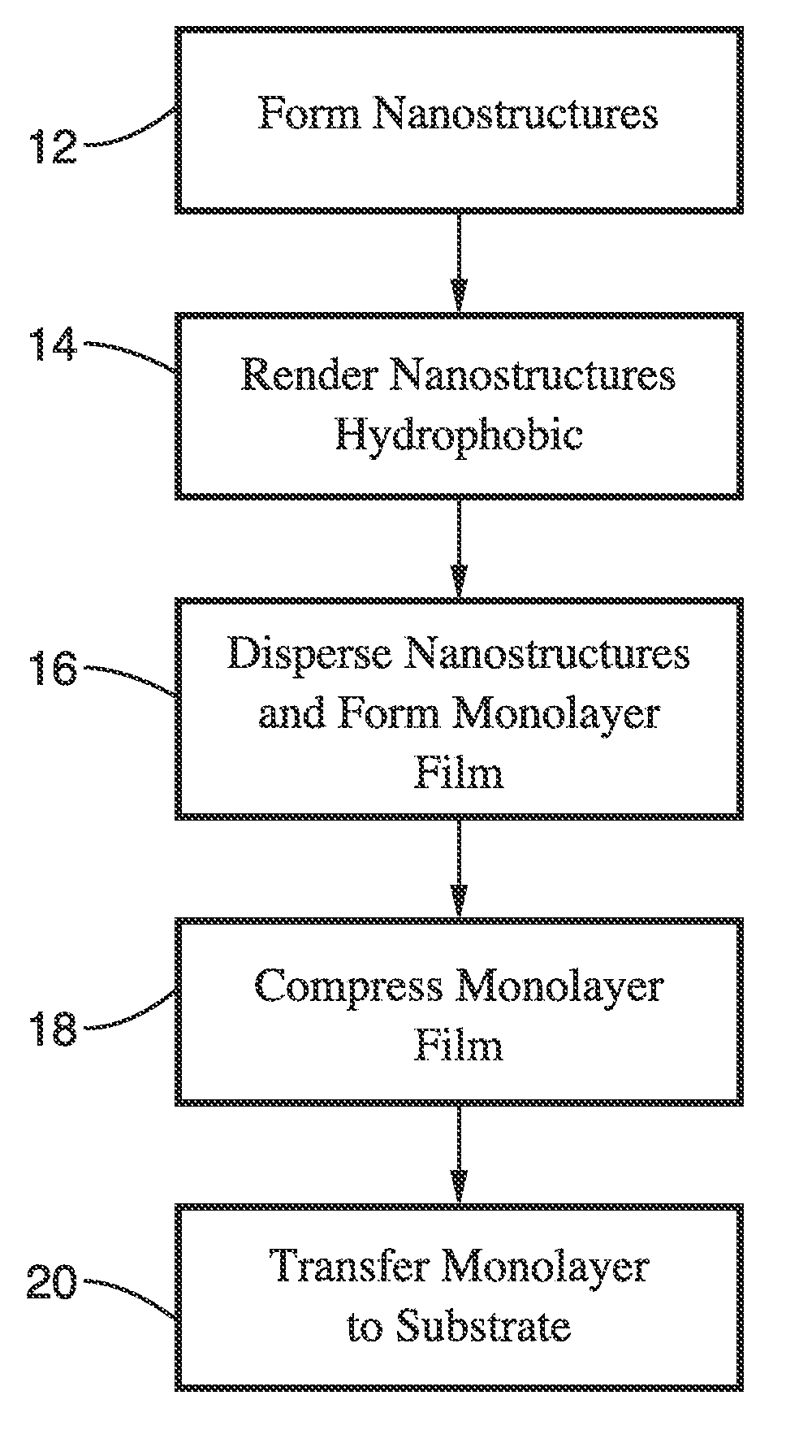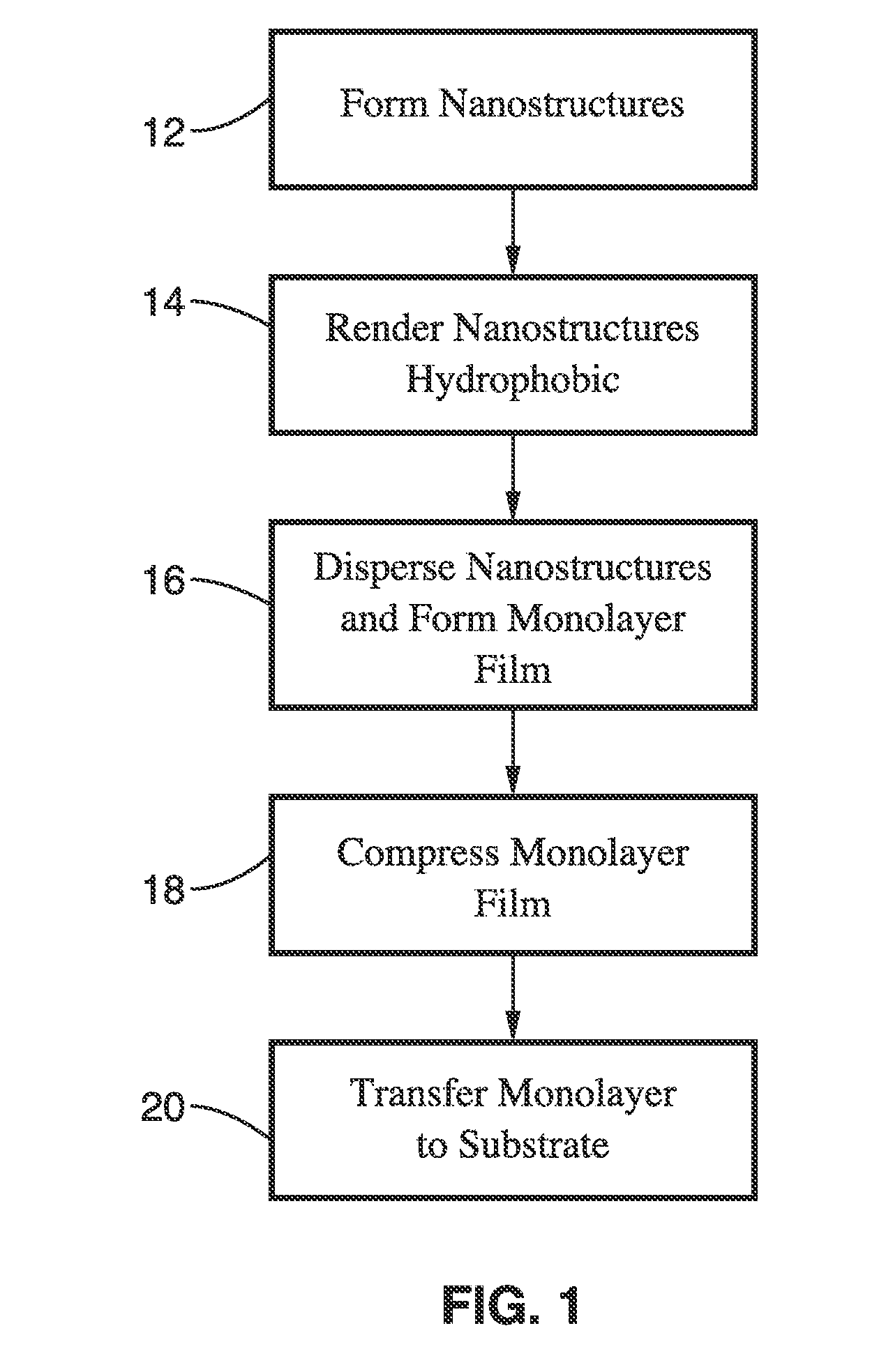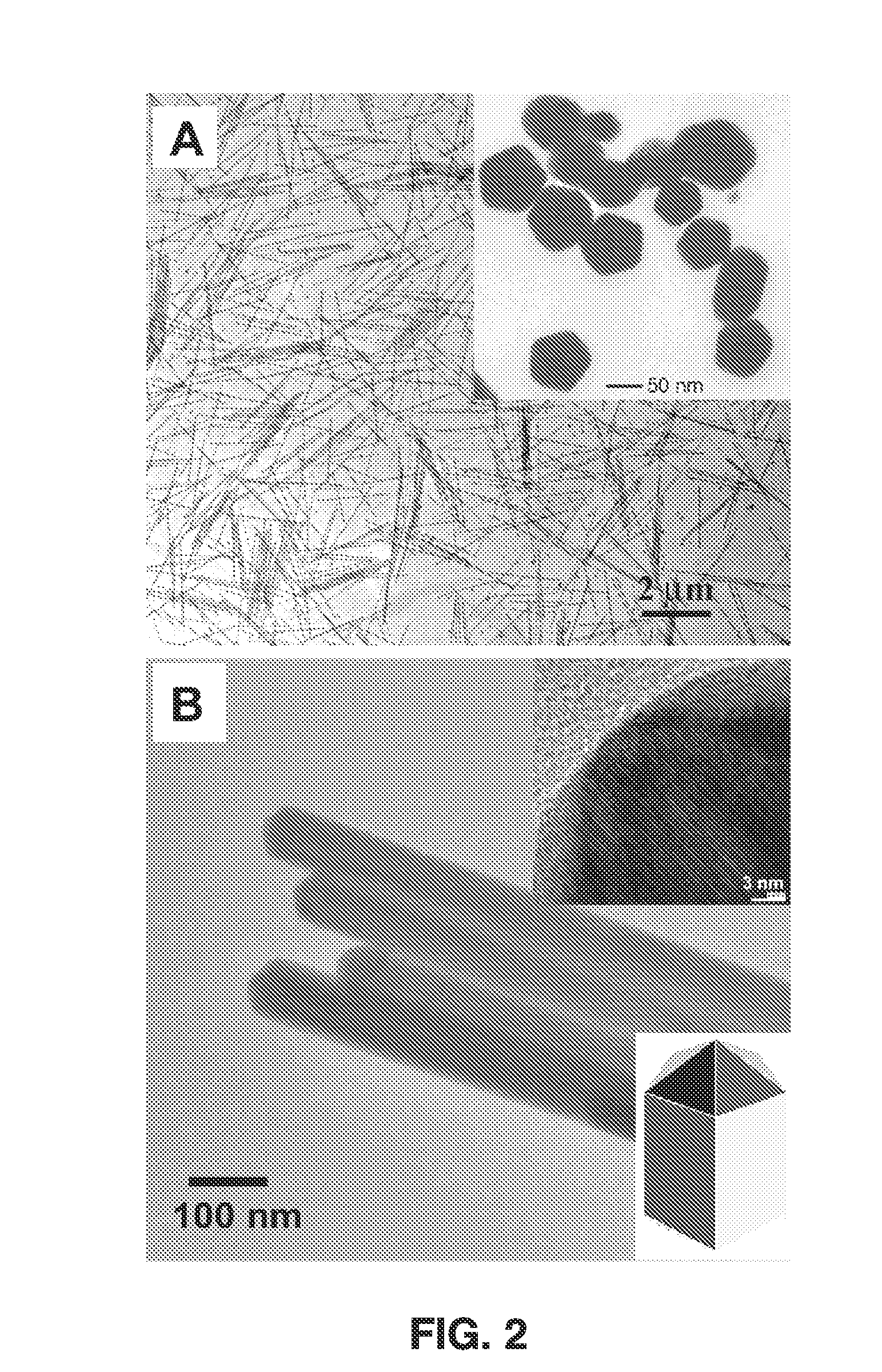Surface-enhanced raman spectroscopy substrate for arsenic sensing in groundwater
a raman spectroscopy and substrate technology, applied in the field of surface-enhanced raman spectroscopy substrates for arsenic sensing, can solve the problems of inability to fully understand the mechanism of shaped nanocrystal growth, unable to meet the needs of a wide range of applications, so as to facilitate the binding of both arsenate and the structure. , the effect of high-
- Summary
- Abstract
- Description
- Claims
- Application Information
AI Technical Summary
Benefits of technology
Problems solved by technology
Method used
Image
Examples
example 4
Ag Nanowire Langmuir-Blodgett Assembly
[0118]The solution of dispersed nanowires was spread drop-wise (typically 2.5 ml of 1010 wires / ml) onto the water surface of a Langmuir-Blodgett trough (Nima Technology, M611). The nanowires form a grayish layer on the water surface, which is compressed by a barrier with a speed of 30 cm2 / min (the width of the trough is 10 cm). The surface pressure was monitored with a Wilhelmy plate during the compression. The film was compressed to different surface pressures, and then deposited to various substrates, such as silicon and glass, for further studies. Typically, the substrates were dipped and then pulled vertically through the film with a speed of 2 mm / min.
example 5
Structural and Optical Analysis
[0119]The Ag nanowire monolayers were examined with an optical microscope equipped with cross-polarizers. The ordering of the nanowires within the monolayers was examined in detail using scanning electron microscope (JEOL 6430) and transmission electron microscope (Philip CM 200). The absorption spectra of the nanowire colloidal solution as well as the nanowire monolayers on substrates were collected using a HP 8453 UV-VIS spectrometer and an Acton UV-VIS / reflectance spectrometer, both equipped with a polarizer accessory. The resultant images under the cross polarizer are shown in FIG. 10A-B. The imaging area corresponds to 735 by 521 μm.
example 6
SERS Experiments on Nanowire Monolayer
[0120]Surface Raman spectra from the organothiol monolayers on Ag were recorded within 24 hours after preparation to minimize any effect of oxidation in air. Rhodamine 6G (Aldrich) was used as purchased. Starting with a R6G stock solution of 10−4 M, concentrations down to 10−10 M were prepared by successive dilution by factors of 10 or 100. After a 10-minute incubation in the corresponding R6G or DNT solution, SERS measurements were made in dry, ambient conditions.
[0121]The visible Raman spectra were recorded using a Holoprobe spectrometer (Kaiser Optical) equipped with a Nd:YAG laser frequency-doubled to 532 nm. The laser was operated at 25 mW with a spot size approximately 100 μm in diameter. To reduce photodecomposition, samples were rotated at 600 rpm. The Raman-scattered light was collected in the 180° direction (perpendicular to the substrate) and detected with an electrically-cooled CCD camera (256×1022 pixels) after cutting off the laser...
PUM
 Login to View More
Login to View More Abstract
Description
Claims
Application Information
 Login to View More
Login to View More - R&D
- Intellectual Property
- Life Sciences
- Materials
- Tech Scout
- Unparalleled Data Quality
- Higher Quality Content
- 60% Fewer Hallucinations
Browse by: Latest US Patents, China's latest patents, Technical Efficacy Thesaurus, Application Domain, Technology Topic, Popular Technical Reports.
© 2025 PatSnap. All rights reserved.Legal|Privacy policy|Modern Slavery Act Transparency Statement|Sitemap|About US| Contact US: help@patsnap.com



